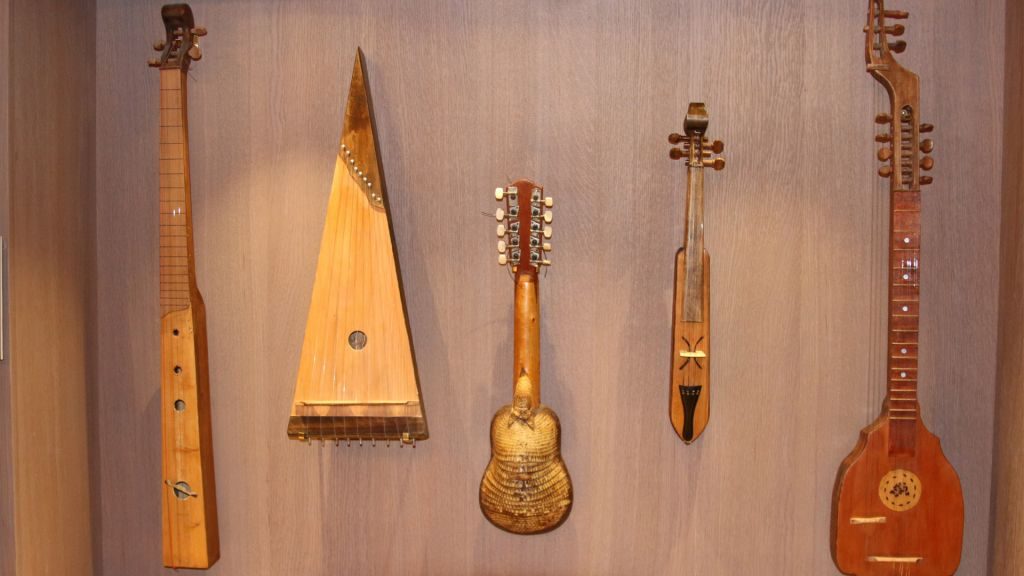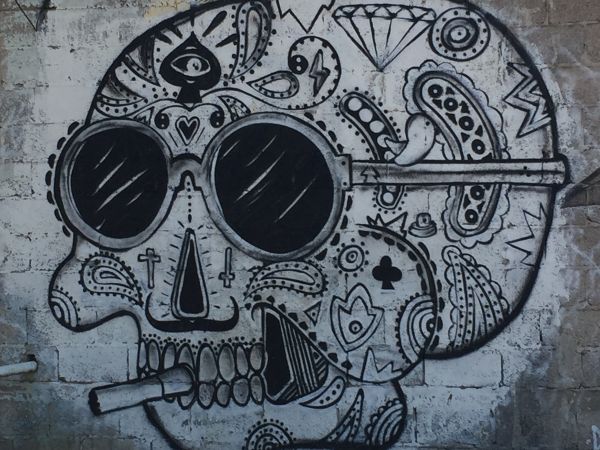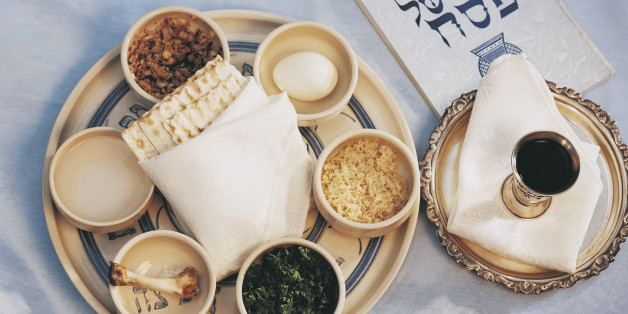While many people dread Passover, it is my favorite holiday. Since I was a young child, Passover has held a special place in our family’s traditions, whether it was taking down my mother’s Passover dishes, helping set the Seder table, unpacking the little hens with the bowls underneath it, where we put the eggs, or a new Haggadah each year, to add to my collection of Haggadot. The holiday of Passover is filled with traditions and customs, and it is a great holiday to add your own customs and traditions. One of the universal customs is towards the end of the Passover Seder, to sing the moving words ‘L’shana Ha’ba’ah B’Yerushalayim,’ ‘‘Next year in Jerusalem.’ Here at ITC, Israel Tour Connection, we make that a true reality for you. Since the number 4 comes up frequently in the Haggadah, as the Passover Seder – such as the 4 cups of wine, the 4 questions, and the 4 children, I wanted to share with you 4 places to visit on your next trip to Israel – since when we say “Next Year in Jerusalem,” we do not have to take it literally, just Jerusalem, you can mean you go to Jerusalem, but travel all over Israel.
The first place newer museum I suggest you visit in Jerusalem is the Hebrew Music Museum, Kikar HaMusica, located in the heart of Nahalat Shiva, on Yoel Moshe Salomon 10 (www.hebrewmusicmuseum.org). Hebrew Music Museum is the only museum of its kind in the country and the world in general. The museum displays antique instrument collections from various historical periods and different places. This is an amazing museum to experience and learn about music through the presentation of collections of manuscripts, liturgical poems, as well as many interactive activities. Visitors learn about Jewish music in areas such as Central Asia, Morocco,  Andalusia, Iraq milk and Egypt, Ashkenazi-European, Balkan, African-Jewish Yemeni and music that was conducted in the ancient Temple, as presented in a unique model of the Temple. Throughout the museum there are passages and corridors that present musical instruments and musical craftsmanship through many different and unique details. When taking a tour in this new museum, you are provided with a Tablet, containing guidance, which includes fascinating tools and and the Tablet allows you to hear and see short films in each space, while the music is playing in front of the instruments, in front of you. There are various interactive games, throughout the museum, as well as the first and only game of its kind in the world: the wandering in the Temple game where you can experience a three-dimensional walk alongside contemporary reality, while experiencing ancient melodies. These games cause visitors to cooperate together, and stimulate visitors to ask questions. The Hebrew Music Museum has the dual purpose to teaching about the development of Jewish Music, and at the same time teaches that soul and spiritual light that is evoked from Jewish Music. Through a visit to the Hebrew Music Museum, one develops a holy depth, and personal musical relationship to Jewish music.
Andalusia, Iraq milk and Egypt, Ashkenazi-European, Balkan, African-Jewish Yemeni and music that was conducted in the ancient Temple, as presented in a unique model of the Temple. Throughout the museum there are passages and corridors that present musical instruments and musical craftsmanship through many different and unique details. When taking a tour in this new museum, you are provided with a Tablet, containing guidance, which includes fascinating tools and and the Tablet allows you to hear and see short films in each space, while the music is playing in front of the instruments, in front of you. There are various interactive games, throughout the museum, as well as the first and only game of its kind in the world: the wandering in the Temple game where you can experience a three-dimensional walk alongside contemporary reality, while experiencing ancient melodies. These games cause visitors to cooperate together, and stimulate visitors to ask questions. The Hebrew Music Museum has the dual purpose to teaching about the development of Jewish Music, and at the same time teaches that soul and spiritual light that is evoked from Jewish Music. Through a visit to the Hebrew Music Museum, one develops a holy depth, and personal musical relationship to Jewish music.
The second place I suggest to visit is the Plugat HaKotel (“the Western Wall Squad”) Museum, located at Hayehudim Street corner of Plugat HaKotel Street, in the Jewish Quarter, in Jerusalem, tells the story of a group of young heroic Betar members who risked their lives to keep a Jewish spark alive at the Western Wall. The museum tells the little known story of the brave fighters of Plugat HaKotel, and the young Jewish boys who risked everything to preserve the Jewish heritage in Jerusalem. Visitors will experience the story from the early shofar blowers, through Plugat HaKotel, to the heroism of the Etzel fighters.
The home of Tzierei Beitar (Beitar youth) during their fight against the British, the very walls of the museum tell the Jewish-Zionist story of the defenders of the Western Wall and the shofar blowers active in the Old City until 1948. One can take an experiential journey as their story is brought to life by a movie depicting their incredible but nearly forgotten story. The Beit Plugat HaKotel Museum tells the heroic story of young members of the Beitar Movement who fought back against the tyranny of the British and the terror of the Arabs and sought to defend the Jewish community living in the Old City and the Jewish connection to the Western Wall. In response to the British attempt to severely curtail Jewish access to the Western Wall, these young members of Beitar took a stand. Strictly forbidden to do so by the British, every year at the end of the fast of Yom Kippur these young people would steal into the Western Wall and blow the shofar, risking imprisonment and worse if they were caught. Those who were caught were imprisoned for months under the harshest conditions. Despite this, they made sure that the shofar was blown each year from 1930 to 1948. In addition, as attacks on Jews in the Old City worsened, in 1937 Beitar decided to establish a defensive fighting unit (pluga) to provide security for Jews and ensure ongoing connection to the Western Wall. They established their headquarters, which was also their living quarters, in the building that now houses the museum. They lived here for 18 months, in ongoing and increasingly violent conflict with the surrounding Arabs and with the British, until the British raided the building and they were forcibly evicted and the house barricaded. Their activities served as the basis for the Etzel.
The third place I suggest to visit is Tzippori, the cradle of the Mishnah.
Tzippori, an ancient city in the lower Galilee, was once a center of Jewish life. Tzippori National Park is located about 5 kilometers west of Nazareth. The Sanhedrin, the highest Jewish court, was located there. Rabbi Yehuda Hanasi, who wrote the Mishna, also lived there. Tzippori is now a national park which is famous for its beautiful mosaic floors, such as the floor referred to as the Mona Lisa of the Galilee, and ancient reservoirs.
The ancient city of Sepphoris, as it was called, was fortified by the Assyrians in the 7th century BCE; it was then used as an administrative center under Babylonian, Hellenistic and Persian rule. At the end of the 2nd century BCE, the Hasmoneans, settled there and renamed the city Tzippori. Herod the Great captured the city without a battle in 37 BCE, bringing in Roman influences. After Herod the Great died in 4 BCE, the Jews rebelled against Roman rule. The Roman governor Varus destroyed the city of Tzippori and many of the Jews were sold into slavery. When Herod Antipas became governor in 1 CE, he rebuilt the city and renamed it Autocratis; the city was known as the “ornament of the Galilee”. During the first Jewish Revolt in 66 CE, the Jews of the city chose not to rebel, they signed a pact with the army and opened their gates to the Romans; the city was therefore not destroyed as were many other cities. The city was renamed Diocaesarea in the 2nd century. After the Bar Kokhba revolt, many Jews settled in the city, including Rabbi Yehuda HaNasi who wrote the Mishna in 220 CE. The Jewish religious court, the Sanhedrin, was also moved to the city. In 351 CE, the Jews of the city rebelled against Roman oppression. This rebellion was quelled by Gallus Caesar. The city of Diocaesarea was destroyed in an earthquake in 363 CE. The city was rebuilt, and Jews, Romans, and Christians lived peacefully in the city during the Byzantine period. In the 5th century, Christians came to live in Tzippori. They believed that Tzippori was the home of Mary’s parents, Ann and Joachim. They built a church in honor of St. Ann. In 634 CE, the city, now known as Saffuriya, was conquered and ruled by the Arabs, under the Umayyad and Abbasid dynasties. In the 12th century, the Crusaders arrived and built a fortress overlooking the city, which they renamed La Sephorie. In 1187, Saladin conquered the city and renamed it Saffuriya; in 1516 CE, the Ottomans conquered the country. Over the next 400 years, Tzippori was a small village of a few hundred Muslim families. The Byzantine church of St. Anna was completely destroyed. The village thrived on its pomegranate and olive produce.
The remains of various buildings were found in Tzippori, attesting to the various inhabitants of the city. These include remains from Roman, Jewish, and Crusader structures. Some of the features one can visit in Tzippori is the Mona Lisa of the Galilee, as well as the the 12th century Crusader tower which was built on top of foundations from a Byzantine structure. The upper part of the tower was built in the 18th century, and was used as a school in the 1900s. The tower houses a museum of the history of Tzippori and house a display of artifacts found on the second floor, and a view of Tzippori from the top of the tower. The Roman theater has been reconstructed. It originally seated 4500 people, but it was damaged either by conquest or from the earthquake in 363 CE. It can be approached from the path, or seen from the Crusader tower. The old Jewish town has been excavated, including a mikvah (Jewish ritual bath) and a cobblestone street. The Nile house, dating from the 5th century, has a mosaic floor depicting rituals regarding water. The intricate pictures show flooding and measuring the waters of the Nile. Drainage channels were also found in this house. The Roman villa, dating from the 3rd century, contains the most famous mosaics in Tzippori. These mosaics portray various figures, including Dionysis, the god of wine, Pan and Hercules, as well as mortals. The center of the mosaic portrays a lady, presumably Venus. A description of each of the various panels of the mosaic is mounted at the path above the mosaic. The villa was destroyed in the earthquake of 363 CE. The synagogue found at Tzippori was built in the 6th century. It has seven panels in the mosaic, including a zodiac with the Hebrew months and Helios in his sun chariot. It also has some panels in the mosaic depicting sacrifices and sacrificial worship in the Holy Temple in Jerusalem. There is also a scene of angels visiting Sarah and another of the binding of Isaac (Akedat Yitzchak). An inscription in Aramaic recalls the name of the donors who paid for the mosaic floors. The water system from the 1st century CE was intricate and well designed. You can enter it and walk through the tunnels and cisterns. A trip to Tzippori is well worth it !
 For the fourth unique place to visit on your next visit to Israel, a stop exploring in the bohemian neighborhood found in Southern Tel Aviv for a tour of its Florentin Urban Culture and Graffiti Tour will be time well spent on your next trip to Israel. Graffiti and street art can be found in almost every street in Tel Aviv, However it is most common in southern Tel Aviv, and the Florentin neighborhood in particular. Elifelet St, HaMehoga St, Abarbanel, 3361 Street & Hanagarim St, are hotspots for Tel Aviv street art. While graffiti is illegal in Israel, the municipality of Tel Aviv turns a blind eye to works of graffiti work in certain areas, with the Florentin neighborhood being notable among them. A big part of the graffiti in this area is painted on the doors and gates of various businesses, so it is suggested to walk around and explore during the afternoon, when most businesses are closed and the artwork is more easily spotted. While most graffiti artists remain anonymous, you can very often recognize their work by their signature or by the theme of the artwork.
For the fourth unique place to visit on your next visit to Israel, a stop exploring in the bohemian neighborhood found in Southern Tel Aviv for a tour of its Florentin Urban Culture and Graffiti Tour will be time well spent on your next trip to Israel. Graffiti and street art can be found in almost every street in Tel Aviv, However it is most common in southern Tel Aviv, and the Florentin neighborhood in particular. Elifelet St, HaMehoga St, Abarbanel, 3361 Street & Hanagarim St, are hotspots for Tel Aviv street art. While graffiti is illegal in Israel, the municipality of Tel Aviv turns a blind eye to works of graffiti work in certain areas, with the Florentin neighborhood being notable among them. A big part of the graffiti in this area is painted on the doors and gates of various businesses, so it is suggested to walk around and explore during the afternoon, when most businesses are closed and the artwork is more easily spotted. While most graffiti artists remain anonymous, you can very often recognize their work by their signature or by the theme of the artwork.
This Shabbat, and on Motzei Shabbat, Saturday night, when you sit around the Seder table, and you say “Next Year in Jerusalem,” speak those words with sincerity. And when the first holy days are over on Sunday night, call us at ITC, to plan your next trip to Israel. Here are just 4 places I have suggested to add to your itinerary for your next visit – the Hebrew Music Museum, Plugat HaKotel Museum, Tzippori, and a Florentin Urban Culture and Graffiti Tour. May your sedarim be meaningful and inspirational, and may the words you utter, Next Year in Jerusalem come to fruition in the coming year, with all of us at ITC! Chag Kasher v’Sameach and Shabbat Shalom!

